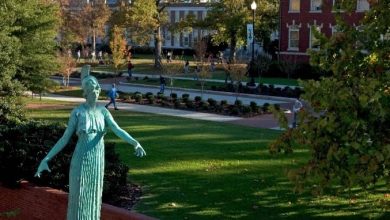Harvey Mudd acceptance Rate: Admissions and Requirements

Harvey Mudd College is a prestigious private college in Claremont, California, near Los Angeles. It is a small university, with only 894 undergraduate students enrolled. Harvey Mudd has a 14 percent acceptance rate, making admissions exceedingly difficult. Engineering, Computational and Applied Mathematics, and Computer Science are also popular majors. Harvey Mudd graduates receive a starting income of $72,500, with 93 percent of students graduating.
This indicates that the school is quite selective. It’s critical to meet their GPA and SAT/ACT standards in order to go past their initial round of filters and demonstrate your academic preparation. Your chances of getting in are almost nil if you don’t match their requirements.
After you’ve cleared this hurdle, you’ll need to wow Harvey Mudd application readers with your extracurriculars, essays, and letters of reference, among other things.
Admissions
With an acceptance rate of 18 percent, Harvey Mudd College admissions is more selective. Half of Harvey Mudd College’s admitted students had a SAT score of 1490 to 1570 or an ACT score of 34 to 35. Note that a percentage of accepted applicants earned scores that were higher than normal ranges, while the remaining quarter had scores that were slightly lower. Harvey Mudd College’s application date is January 5th, and the application price is $70.
The GPA of a student is a very essential academic factor for Harvey Mudd College admissions officers. When available, an applicant’s high school class rank is examined, and letters of recommendation are very important to Harvey Mudd College admissions personnel.
Tuition
The cost of tuition at Harvey Mudd College is $60,703. If you did not know, Harvey Mudd College is substantially more expensive than the average college at $43,337 for tuition.
Services such as the Library, student gym facilities, student recreational centers, tech hubs, and clinics are covered by these fees, but vary across universities.
Take note of the total cost plus net price when you compare the costs of other institutions. The entire price includes the sticker price, housing and board, books and supplies, transportation, and personal expenditures. The overall cost at Harvey Mudd College is $79,539. The net price is the average cost of a university after financial assistance and scholarships are deducted from the overall cost, which for a need-based student is $32,704 on average.
Related Post:Do Community Colleges Accept Everyone ?
Subject Test Requirements for the SAT
The SAT subject test requirements vary by school. Typically, selective schools require them, although the majority of public institutions do not.
According to Harvey Mudd, SAT subject tests are necessary for admission. Keep reading and learn about the requirements.
The SAT/ACT and GPA carry more weight than SAT Subject Tests.Suppose you have to choose between improving your SAT/ACT score and boosting your SAT Subject Test scores, choose SAT/ACT score.
Because admission to this school is exceedingly competitive, having a high SAT/ACT score and GPA is critical.Suppose you fail to meet their SAT/ACT and GPA requirements, you’ll certainly not get the admission.
With a 1560 SAT or a 35 ACT, you should aim for the 75th percentile to have the highest chance of getting in. You should also have a GPA of at least 4.17. If your GPA is lower, you’ll need to make up for it with a higher SAT/ACT score.
You’ll also need to wow them with the rest of your application for a school like Harvey Mudd. We’ll get into those specifics later.
If you apply with a score below 1560 on the SAT or a 35 on the ACT, however, the odds are stacked against you from the start, and you have a slim chance of being accepted. You must compete against a large number of students who have great SAT/ACT scores and strong applications.
Policy for Sending ACT Scores
If you take the ACT instead of the SAT, you will have a big advantage in terms of how your scores are received, which will affect your testing strategy.
Here’s the deal: when you send ACT scores to institutions, you have complete control over which tests you send. You could take ten tests and only transmit the highest-scoring one. This is not the case with the SAT, where many colleges want you to send all of your past exams.
This implies that you stand a higher chance of improving your ACT score than you might think. To satisfy the school’s ACT requirement of 35 or higher, you should take the ACT as many times as possible.
Superscore Policy in the ACT
Most universities do not superscore the ACT in general. (When you submit a superscore, the school takes your top section scores from all of your test dates and combines them to give you the best possible composite score.) As a result, most colleges will only consider your highest ACT score from one session.
However, according to our data, Harvey Mudd outperforms the ACT. Although we couldn’t find confirmation on the school’s admissions website, many sources affirm that the ACT is superscore. For additional information, we recommend contacting their admissions office directly.
Financial Aid Statistics at Harvey Mudd College
Financial aid is money provided to students in order to assist them in paying for their education. It is frequently given to those who are in need or who have demonstrated merit.
The FAFSA, or Free Application for Federal Student Aid, is a form that determines your or your family’s demonstrated ability to pay for college. First-year students at Harvey Mudd College were awarded $50,267 in need-based scholarships or grants. In addition, 52 percent of first-year students earned need-based financial aid in the fall of 2019.
Need-based self-help aid includes federal loans and work-study programs. The average need-based self-help aid grant for first-year students was $2,919.
Students who have exhibited a specific talent or academic performance are offered merit-based aid, often known as non-need-based aid.
Life as a student
Harvey Mudd cultivates a tight-knit, creative, and fun-loving learning environment.
From ballroom dance to robots to sustainability, we study, play, and explore a wide range of interests. At Harvey Mudd, everything is connected.
From New Student Orientation to Commencement and all in between, the Division of Student Affairs (DSA) is in control! We believe Harvey Mudd College’s mission statement obligates us to educate ethical leaders who care about society’s well-being.
The DSA team is responsible for a wide range of student services and assistance outside of the classroom. Your housing and residential living experience, campus activities, social justice education programs, student wellness support, career services, leadership training, as well as volunteering and community service, will all provide you with opportunities.
History of Harvey Mudd
The College opened its doors two years later, in 1957, when the Space Race made technical education a priority in the United States. The founders’ objective of attracting the best students in the country and providing them with a rigorous scientific and technological education as well as a strong curricular emphasis on the humanities and social sciences has been realized and expanded successfully. The Clinic Program, which permits student teams to tackle challenges provided by sponsoring industry, government, and charitable groups, was established by the College in 1963. Harvey Mudd graduates acquire PhD degrees in science and engineering at one of the highest rates in the country, thanks to the university’s emphasis on undergraduate research for all students.
Harvey Mudd College first opened its doors in September 1957, just a few weeks before Sputnik I launched the Space Age. When the school first opened its doors, it had 48 students and seven staff members who shared the aim of founding a technical college that would stress the humanistic side of technology. The institution’s first president was nuclear physicist Joseph B. Platt, and new courses and a new curriculum were developed with the help of a Carnegie Corporation grant.
The Harvey Mudd College campus comprised of one (nearly) finished dorm and borrowed classrooms and equipment when the first class arrived. Most faculty members were willing to take on administrative obligations in addition to their teaching duties in the early years. Some classes were even held in teacher and staff members’ homes.
Stuart Black and Peter Loeb, who both transferred to Harvey Mudd during their junior years, were among the inaugural graduates of the College in June 1959. The ceremony received national attention and was televised due to the small number of the graduating class. Both alumni went on to become professors in universities.
Students began to fill classrooms and dorms as they were erected. By 1965, there were 284 students registered in classes, with 43 teaching members. In 2015, Harvey Mudd College celebrated its 60th anniversary, with an enrollment of 812 students and rising.
- Kenneth Baker became Harvey Mudd College’s second president in 1976, and was succeeded by Henry E. Riggs in 1988, Jon C. Strauss in 1997, and Maria M. Klawe in 2006. Harvey Mudd College now has 880 exceptional students enrolled who are studying from a dedicated staff through rigorous and challenging educational experiences. The Western Association of Schools and Colleges recently reaffirmed the College’s institutional accreditation.
The Harvey Mudd College Seal embodies the college’s different beliefs. The sun symbolizes energy; the elliptical Mobius strip denotes structure; the dividers denote measurement; the inner and outer ellipses might be understood as orbital pathways, implying a concern for space; and the globe denotes humanities and culture. The dividers are used to connect the sun and the globe, indicating the measurement of energy and matter as well as the measurement of mankind and civilization.
How to Choose a College
Location
For most students, location is critical to choosing a college. If you choose to attend a public school in your home state, you may be eligible for in-state tuition, which might save you a lot of money in college.
You can also save money on travel because driving is usually less expensive than flying. Consider whether you want to live in a small town, a large city, or somewhere in the middle.
Small college towns often have a more personal feeling of community, allowing you to form close bonds with your classmates and teachers. Large-city schools, on the other hand, can provide you with additional social and cultural opportunities, as well as internships with prominent corporations and charities.
Related Post:High Acceptance Rate Colleges in California
Academic Majors on Offer
If you already know which academic path you want to take, make sure that any institution you’re considering has a major that suits that path. Students who know they want to study art history, for example, should not consider colleges that do not offer this program.
Students who are still undecided about their academic aspirations, on the other hand, should consider enrolling in an institution that offers a diverse range of majors.
Academic Excellence
Despite what its marketing department may lead you to believe, no institution can claim to have the greatest programs in every field. BestColleges’ rankings can help you gauge a college’s overall academic excellence and reputation before you enroll.
Check to see if the college is accredited. After that, check to determine if various academic departments are accredited in their respective fields. If you wish to pursue a business administration degree, for example, you should look for a school that has been accredited by a relevant professional organization.
You may also look into the career and research accomplishments of faculty in your desired department by checking whether they’ve received any honors or recognition for any revolutionary publications or discoveries.
Related Post:List of Colleges that Accept GED









